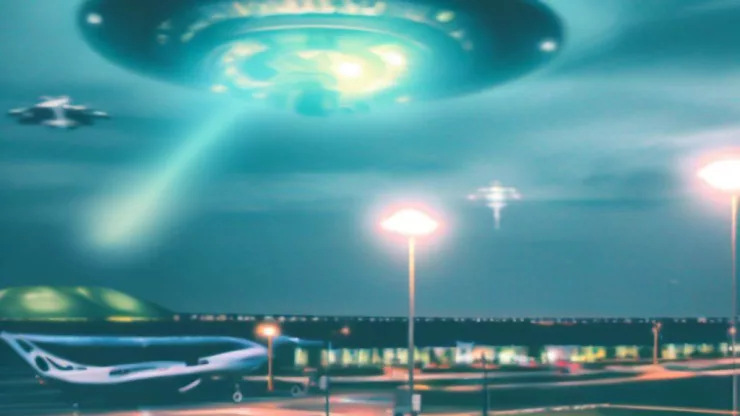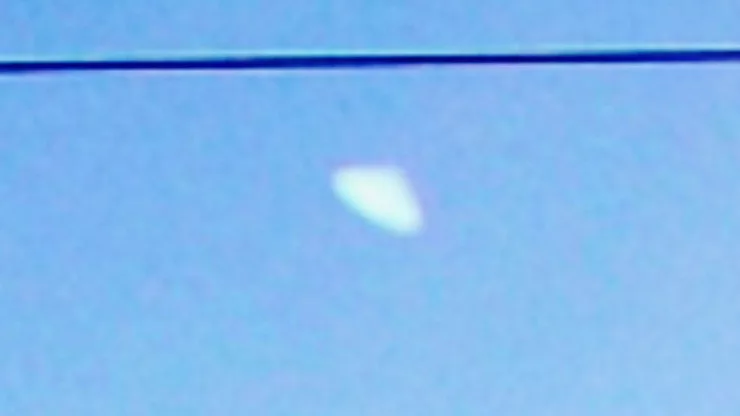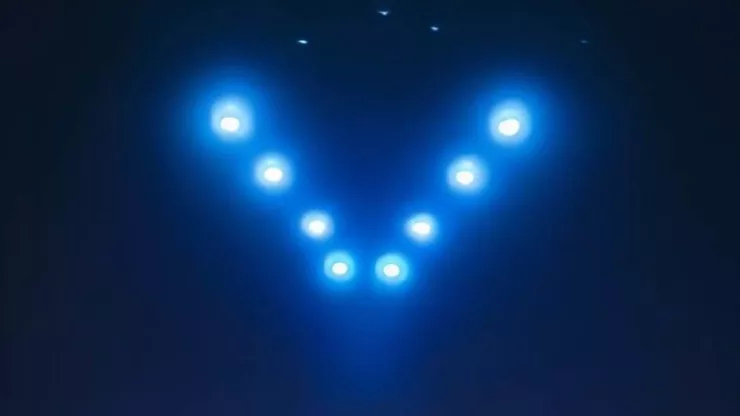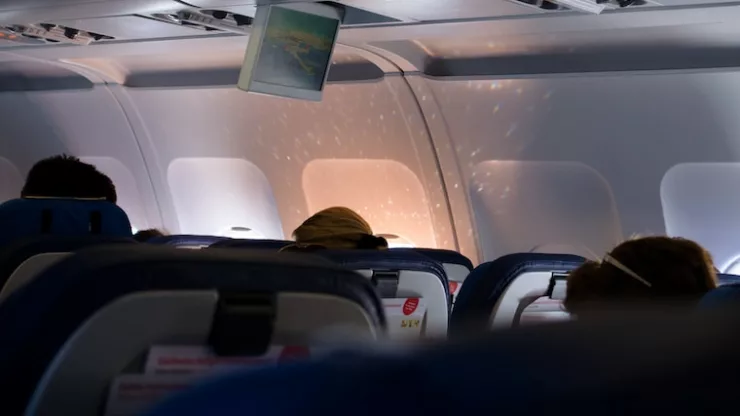Jump to Section
The 1952 Nash-Fortenberry UFO Sighting: A Strange Encounter
On July 14, 1952, a routine commercial flight from New York to Miami encountered something strange and unexplainable.
The pilot, William Nash, and co-pilot, William Fortenberry, reported seeing a group of unidentified flying objects (UFOs) moving at high speed and changing direction abruptly.
This sighting sparked a heated debate and fascinated the public, fueling the growing interest in the UFO phenomena.
In this article, we will explore the details of this strange encounter and its impact on airline safety.
Uncovering the Details of the Commercial Flight Encounter
The Nash-Fortenberry sighting occurred at around 9:00 pm when Flight 526A was flying over North Carolina.
According to the pilots’ report, they saw a group of six to eight bright lights moving erratically, changing course, and accelerating rapidly.
The objects appeared to be metallic and disc-shaped, and they seemed to be playing some sort of game of "cat and mouse" with the aircraft.
The pilots attempted to contact the ground control tower, but their calls went unanswered.
The objects continued to fly alongside the aircraft for several minutes before disappearing out of sight.
When Flight 526A landed in Miami, the pilots reported the incident to the air traffic control, who dismissed it as a weather balloon sighting.
However, the pilots were convinced that they had seen something extraordinary, and their report triggered a chain of investigations and debates among experts and the public.
The Impact of the 1952 UFO Sighting on Airline Safety
The Nash-Fortenberry sighting raised concerns about the safety of commercial flights and the potential risks posed by unidentified flying objects.
The Federal Aviation Administration (FAA) formed a committee to investigate the incident and examine ways to prevent similar events from happening in the future.
The committee concluded that the pilots’ report was credible and consistent with the observations of other pilots and radar operators.
The FAA also issued a directive instructing air traffic controllers to report any sightings of UFOs or other unexplained phenomena, and to take appropriate measures to prevent collisions or other hazards.
The Nash-Fortenberry sighting contributed to the development of air traffic control protocols and procedures that are still in use today.
The Nash-Fortenberry Sighting Remains a Mystery: What Could it Mean?
Despite numerous investigations and speculations, the Nash-Fortenberry sighting remains a mystery to this day.
Some experts have suggested that the pilots might have seen experimental military aircraft or some natural phenomena like ball lightning.
Others argue that the sighting was a genuine encounter with extraterrestrial objects.
The debate continues, and the Nash-Fortenberry sighting has become a classic case in the history of UFO sightings.
The incident has inspired many books, films, and documentaries, and it continues to fascinate and intrigue people around the world.
The Nash-Fortenberry sighting may never be fully explained, but it remains a reminder of the mysteries and wonders of our universe.
The Nash-Fortenberry UFO sighting is a fascinating and mysterious event that has captured the public’s imagination for decades.
The incident remains a reminder of the potential risks and wonders of our universe and the importance of investigating and understanding them.
The impact of the sighting on airline safety and air traffic control protocols highlights the need for vigilance and preparedness in the face of unexpected events.
The Nash-Fortenberry sighting may remain a mystery, but it is a reminder of the endless possibilities and wonders of the world around us.
FAQ
What was the Nash-Fortenberry UFO sighting?
The Nash-Fortenberry UFO sighting occurred on July 14, 1952, when a commercial flight from New York to Miami encountered a group of unidentified flying objects moving at high speed and changing direction abruptly.
The incident sparked a heated debate and fascinated the public, fueling the growing interest in the UFO phenomena.
Who were William Nash and William Fortenberry?
William Nash and William Fortenberry were the pilot and co-pilot, respectively, of Flight 526A, the commercial flight that encountered the UFOs.
They reported the incident to the air traffic control, triggering a chain of investigations and debates among experts and the public.
What impact did the Nash-Fortenberry sighting have on airline safety?
The Nash-Fortenberry sighting raised concerns about the safety of commercial flights and the potential risks posed by unidentified flying objects.
The Federal Aviation Administration formed a committee to investigate the incident and examine ways to prevent similar events from happening in the future.
The incident resulted in the development of air traffic control protocols and procedures that are still in use today.
What could the Nash-Fortenberry sighting mean?
Despite numerous investigations and speculations, the Nash-Fortenberry sighting remains a mystery to this day. Some experts have suggested that the pilots might have seen experimental military aircraft or some natural phenomena like ball lightning.
Others argue that the sighting was a genuine encounter with extraterrestrial objects.
What impact did the Nash-Fortenberry sighting have on public perception of UFOs?
The Nash-Fortenberry sighting played a significant role in fueling the public’s growing interest and fascination with UFOs.
The incident sparked debates and investigations among experts and the public, and it remains a classic case in the history of UFO sightings.
What measures did the FAA take after the Nash-Fortenberry sighting?
The Federal Aviation Administration issued a directive instructing air traffic controllers to report any sightings of UFOs or other unexplained phenomena, and to take appropriate measures to prevent collisions or other hazards.
The Nash-Fortenberry sighting contributed to the development of air traffic control protocols and procedures that are still in use today.
Greetings fellow space travelers, I am Draco Blaze, creator of Alienated Media who is passionate about exploring the unknown and writing about my experiences with extraterrestrial life.
My focus is on alien encounters and creating thought-provoking sci-fi short stories that transport readers to new worlds and realities.
Feel free to contact me at [email protected].





